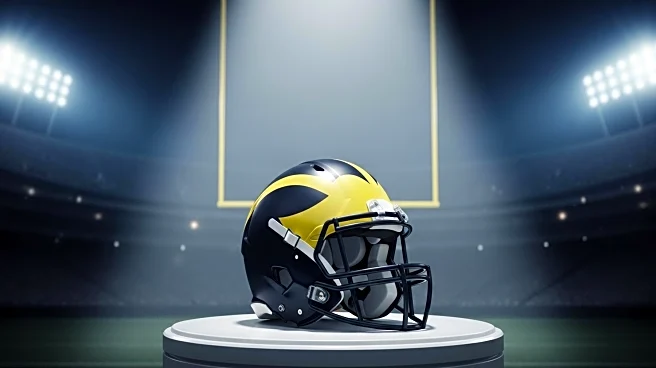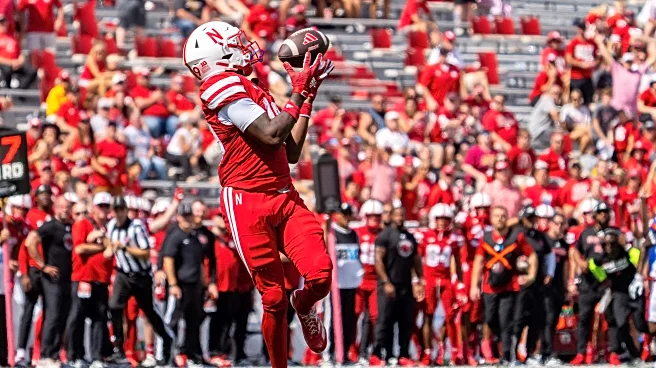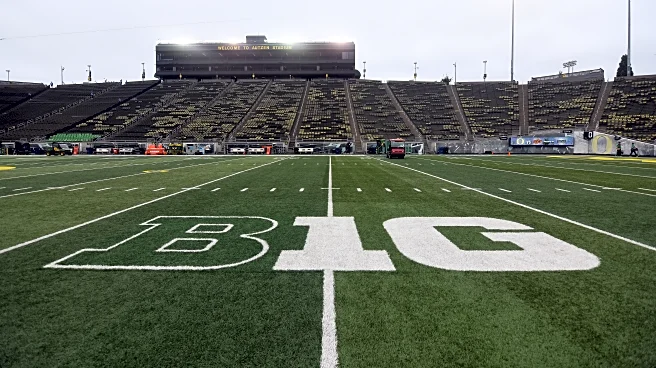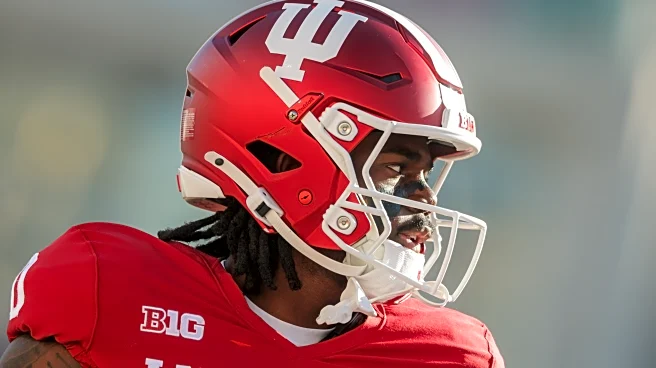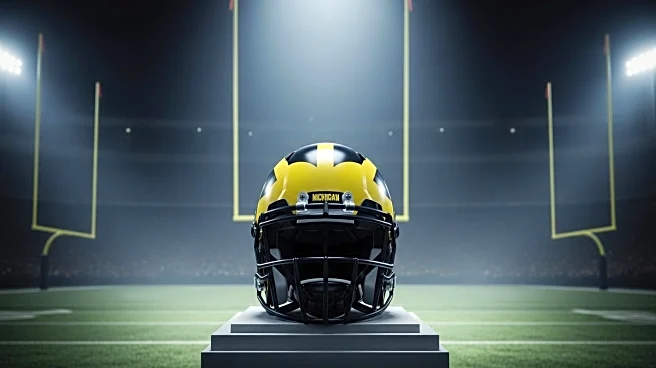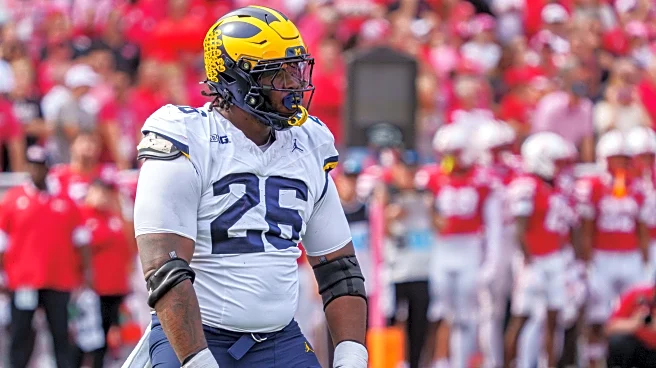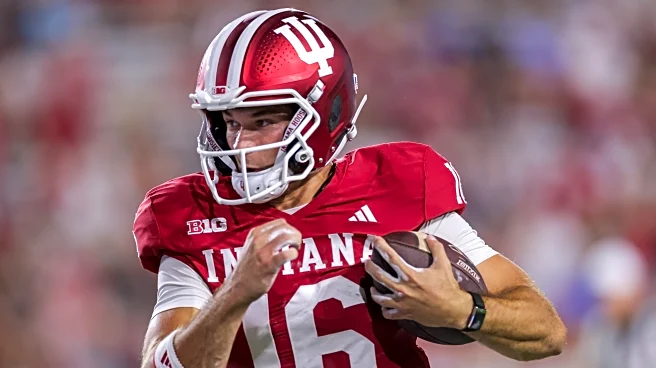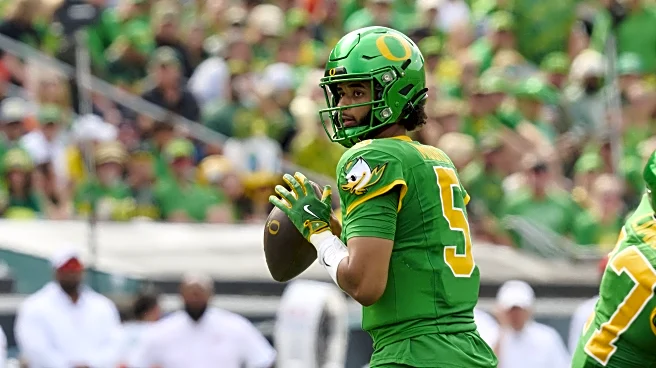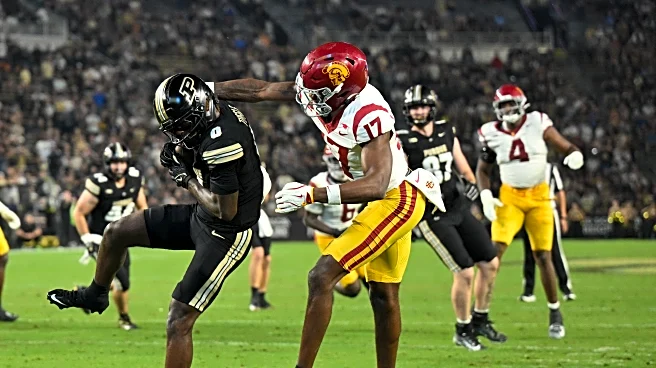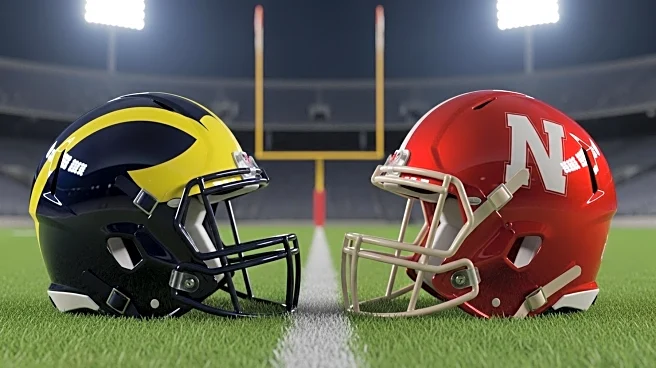What is the story about?
What's Happening?
Justice Haynes, a running back who transferred from Alabama to Michigan, played a pivotal role in the Wolverines' victory against Nebraska. In the Big Ten opener, Michigan defeated Nebraska 30-27, with Haynes rushing 17 times for 149 yards and a touchdown. This performance marked a significant contribution to Michigan's ground game, which outgained Nebraska 286 to 43 yards. Haynes, who has started his first season at Michigan with impressive stats, has accumulated 487 rushing yards and six touchdowns over four games. His transfer was motivated by the desire for a starting role, as he was previously behind other running backs at Alabama.
Why It's Important?
Haynes' transfer and subsequent performance highlight the impact of player mobility in college football, particularly in enhancing team dynamics and competitiveness. His success at Michigan underscores the potential benefits for athletes seeking more prominent roles and opportunities. For Michigan, Haynes' addition strengthens their running back lineup, contributing to their offensive strategy and overall team performance. This development could influence recruiting strategies and player transfers in college sports, as athletes seek environments where they can maximize their potential and visibility.
What's Next?
As Michigan continues its season, Haynes is expected to play a crucial role in their offensive strategy. His performance may attract attention from NFL scouts, given his impressive stats and potential for further development. Michigan will likely leverage Haynes' skills in upcoming games to maintain their competitive edge in the Big Ten. Additionally, Haynes' success could inspire other players to consider transfers for better opportunities, potentially affecting team compositions across college football.
Beyond the Headlines
Haynes' transfer and success at Michigan may prompt discussions on the ethical and strategic implications of player transfers in college sports. The ability for athletes to move between programs can lead to shifts in team dynamics and competitive balance. This trend raises questions about the long-term impact on player development, team loyalty, and the overall landscape of college athletics.
AI Generated Content
Do you find this article useful?
